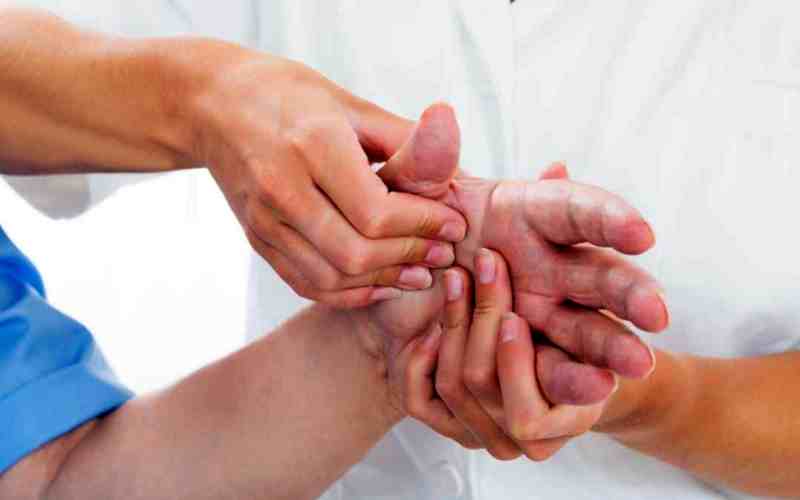
Arthrosis of the hand: how it occurs and what to do
What is arthrosis of the hand? The term arthrosis is used to define a chronic, developmental disease affecting the joints, the anatomical basis of which is represented by a degenerative process of the cartilages lining the joint bone heads and which undergo wear and tear
Forms, signs, symptoms and treatment of arthrosis of the hand
The gradual destruction of the cartilage determines the decrease of the joint space and the reaction of the surrounding bone tissue; this results in clinical pictures variably dominated by pain and stiffness, sometimes associated with flawed postural attitudes and in advanced stages by deformity and functional impotence.
Arthrosis in the hand takes different forms depending on the site, the number of joints affected and the possible associations
Among the most frequent forms are trapeziometacarpal arthrosis or rhizoarthrosis and arthrosis of the distal interphalangeal joints or Heberden’s arthrosis.
Localisation to the trapeziometacarpal joint (rhizoarthrosis) accounts for about 10% of all arthritic manifestations of the locomotor system. Affecting the ‘root’ (rhizo) of the first digital ray, it compromises the kinematics of the entire thumb chain, leading to a severe disability linked to the progressive loss of the specific function of the 1st digital ray: the pincer in opposition of the thumb to the other fingers.
In the early stages, the disorder is often represented by inconstant pain and conservative treatment can be proposed based on a few simple principles: functional rest, economy of the trapeziometacarpal joint, the use of physical agents and static braces.
In the more advanced stages, there is constant pain at the base of the thumb, deformity and significant functional limitation that takes the form of the inability to unscrew a bottle cap, lift even small objects or turn a key in a lock.
At this stage, the need for surgical treatment must be considered.
There are basically two possible alternatives: biological arthroplasties and arthroplasties.
Biological arthroplasties, which have been used for about 30 years now, have certainly proved their worth, allowing us to treat thousands of patients with decidedly good and lasting results both on pain and on the restoration of joint mobility and grip strength.
Proposed with different technique variants, biological arthroplasties basically involve the removal of the trapezium (one of the two bony components worn out by the arthritic process) with resolution of the painful conflict between it and the base of the I metacarpal and the creation of a supportive neoarticulation using local tendinous and capsular structures, without implanting any foreign material.
This is certainly a delicate operation that must be performed in specialised hospitals, but it has the great advantage of eliminating all possible complications related to the use of foreign materials.
Complications such as these have always limited the use of arthroplasty here, which is still probably burdened by an excessive number of complications related to the difficulty of obtaining stable anchorage on such small bone segments and to possible adverse reactions to prosthetic materials.
Potentially all the numerous joints of the hand can undergo an arthrosis process leading to: a Scapho-Trapezial Arthrosis, a Peritrapezial Arthrosis, an Intercarpal Arthrosis, a Metacarpophalangeal Arthrosis, a Proximal Interphalangeal Arthrosis or Bouchard’s Arthrosis.
By far the most frequent form, however, is Distal Interphalangeal Arthrosis or Heberden’s Arthrosis: this is the most widespread form of primitive arthrosis, it affects predominantly women and generally after the menopause is related to an autosomal dominant gene in females and recessive in males.
It manifests as hard dorsal swelling of the Distal Interphalangeal joints (in the vicinity of the nails), with characteristic paraarticular osteocartilaginous nodosities, deviations and deformities with swelling of the joint heads.
It causes rigidity in flexion and lateral deviation of the distal phalanges, with sometimes intense pain with an intermittent course.
The disorder, predominantly cosmetic in the early stages, manifests itself functionally with increasing functional limitation of the digital pincer in the advanced stages both on an antalgic basis and as a result of the worsening joint deformities.
Conservative treatment, in the mild forms, is aimed solely at reducing pain with the use of medical and physiotherapeutic anti-inflammatory and pain-relieving therapy.
In advanced forms, if indicated, arthrodesis (fusion) surgery is performed in extension of the distal interphalangeal joint, with complete resolution of pain and correction of the imperfection.
Read Also:
Emergency Live Even More…Live: Download The New Free App Of Your Newspaper For IOS And Android
Shoulder Instability And Dislocation: Symptoms And Treatment
Shoulder Tendonitis: Symptoms And Diagnosis
Dislocation Of The Shoulder: How To Reduce It? An Overview Of The Main Techniques
Frozen Shoulder Syndrome: What It Is And How To Treat It
Arthrosis: What It Is And How To Treat It
Arthrosis: What It Is And How To Treat It
Juvenile Idiopathic Arthritis: Study Of Oral Therapy With Tofacitinib By Gaslini Of Genoa
Rheumatic Diseases: Arthritis And Arthrosis, What Are The Differences?
Rheumatoid Arthritis: Symptoms, Diagnosis And Treatment
Joint Pain: Rheumatoid Arthritis Or Arthrosis?
The Barthel Index, An Indicator Of Autonomy
What Is Ankle Arthrosis? Causes, Risk Factors, Diagnosis And Treatment
Unicompartmental Prosthesis: The Answer To Gonarthrosis
Knee Arthrosis (Gonarthrosis): The Various Types Of ‘Customised’ Prosthesis
Symptoms, Diagnosis And Treatment Of Shoulder Arthrosis


